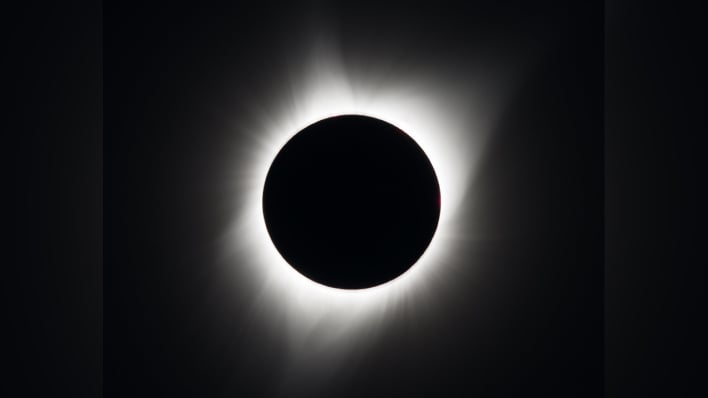Get Ready For The Longest And Best View Of A Total Solar Eclipse In 100 Years

According to NASA, the upcoming total solar eclipse will last up to 4 minutes and 28 seconds in an area about 25 minutes northwest of Torreon, Mexico. In 1991, a total solar eclipse lasted 4 minutes an 10 seconds, which stands as the longest since at least 1925.
Those along the eclipse center in Texas will only lose a couple of seconds of viewability, while others as far north as Economy, Indiana, will get around 4 minutes. For those further north, such as Canada, the eclipse will last up to 3 minutes and 21 seconds. Those outside the path of totality need not worry about missing the show, as every contiguous US state, plus parts of Alaska and Hawaii, will be able to view a partial solar eclipse.
During the total solar eclipse in 2017, the sun was nearing what is known as solar minimum. This allowed viewers of the total eclipse the ability to see the corona. However, being the sun was “quiet,” NASA says the streamers flowing into the solar atmosphere were restricted to just the equatorial regions of the bright star. During the 2024 total eclipse, the sun will be in or near solar maximum. This is when the magnetic field is more “like a tangled hairball”. Streamers will most likely be visible throughout the corona this go round. Also, viewers will have a better opportunity to see prominences, which NASA says “appear as bright, pick curls or loops coming off the sun.”
Anyone hoping to catch a glimpse of the total solar eclipse will need to take special care of their eyes. It is extremely important that everyone viewing an eclipse wear safe solar viewing glasses, or “eclipse glasses”, not regular sunglasses. This is because it is not safe to look directly at the Sun, except during the brief total phase of total solar eclipse, or when the Moon completely blocks the Sun. For those wanting to capture the event via a camera lens, binoculars, or a telescope, they will need to use a special-purpose filter secured over the front of the optics.
NASA is also funding research initiatives during the 2024 total eclipse to build on research conducted during the 2017 eclipse. A few of the studies will focus on the influence the sun has on Earth with a variety of instruments, including cameras on high-altitude research planes, ham radios, and more. Other studies will utilize instruments launched during the 2023 annular solar eclipse, as well as during the upcoming total solar eclipse.
The total solar eclipse will take place on April 8, 2024. For those outside of the eclipse path, live feeds will be broadcast, like with the total eclipse in 2017.

